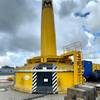Product Tankship Demand & Overcapacity: An Industry Note
Concern about oversupply only occurs when there are too many ships relative to demand, and in a recent 'Industry Note', McQuilling Services attempts to quantify the situation. A brief excerpt follows:
Much has been said about the product tanker market recently, mainly about tonnage supply. More industry voices are speaking about their concern of over-ordering and too many ships. However, the number of vessels on order and planned for delivery is really only half the story. As long as there is enough demand, any number of ships on order may be acceptable. Concern about oversupply only occurs when there are too many ships relative to demand.
In this note we look at product tanker demand to try to quantify the other half of the story. As a starting point, it should be noted that there is no readily-available information to be had on tanker demand measured in ton-miles.
Both historical and projected ton-mile demand data must be synthesized through many steps from basic trade data between countries. Even this data is spotty and somewhat dubious when looking at non-OECD bilateral country trade flows. Perhaps this is why we don’t see a lot of detailed discussion on tanker ton-mile demand.
Our demand development process includes a regional grouping of the world which facilitates our tanker market forecasting methodology. This grouping identifies 15 different regions where we track the seaborne movement of crude and refined products.
To be sure, there are a number of assumptions required to do this, but in the end we account for all relevant seaborne trade in this way, across 225 distinct trades.
Conclusions
McQuilling's analysis of clean demand suggests that product tanker demand growth has undergone a dramatic shift downwards since 2010, driven by substantially reduced average trade lengths. This conclusion is based on global trade data, and so accounts for all demand increases and decreases across 225 trade routes.
Additional work on both geographic and temporal trade analysis is indicated to determine exactly where the declines have taken place.
It would also appear, given the magnitude of the product tanker orderbook that, relative to tanker supply, product tanker demand is not keeping up and the reason may be the negative influence on ton-miles that US Gulf exports seem to represent.
Source: McQuilling Services – Industry Note 14 – "Product Tankers: Truncated Trades Temper Ton-Miles" https://www.mcquilling.com/













